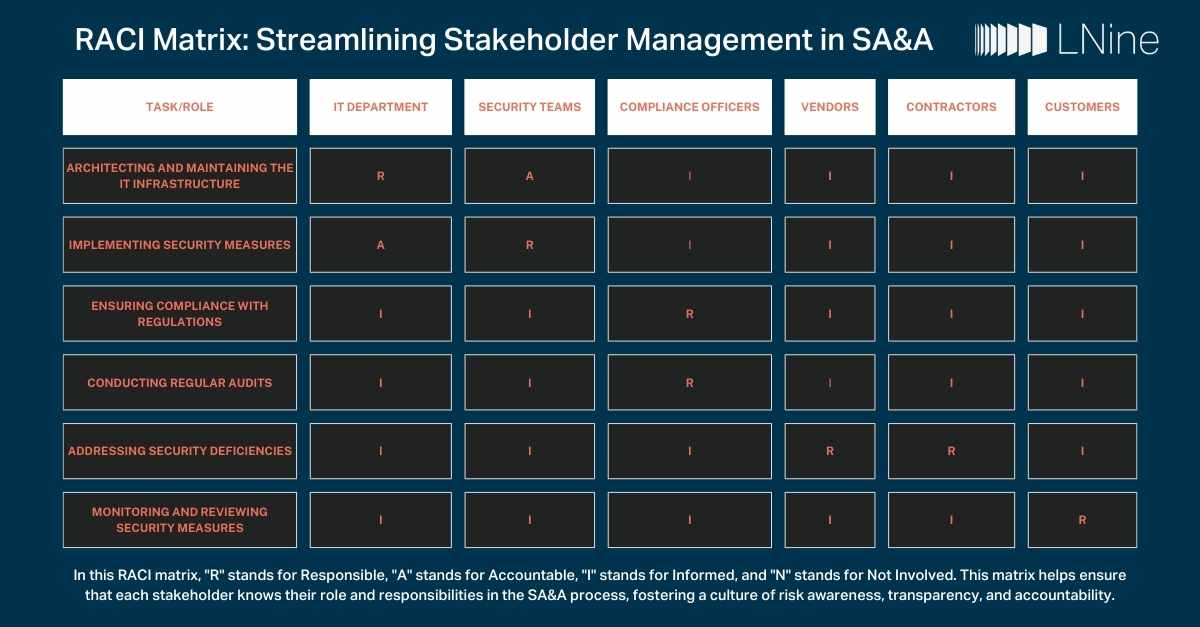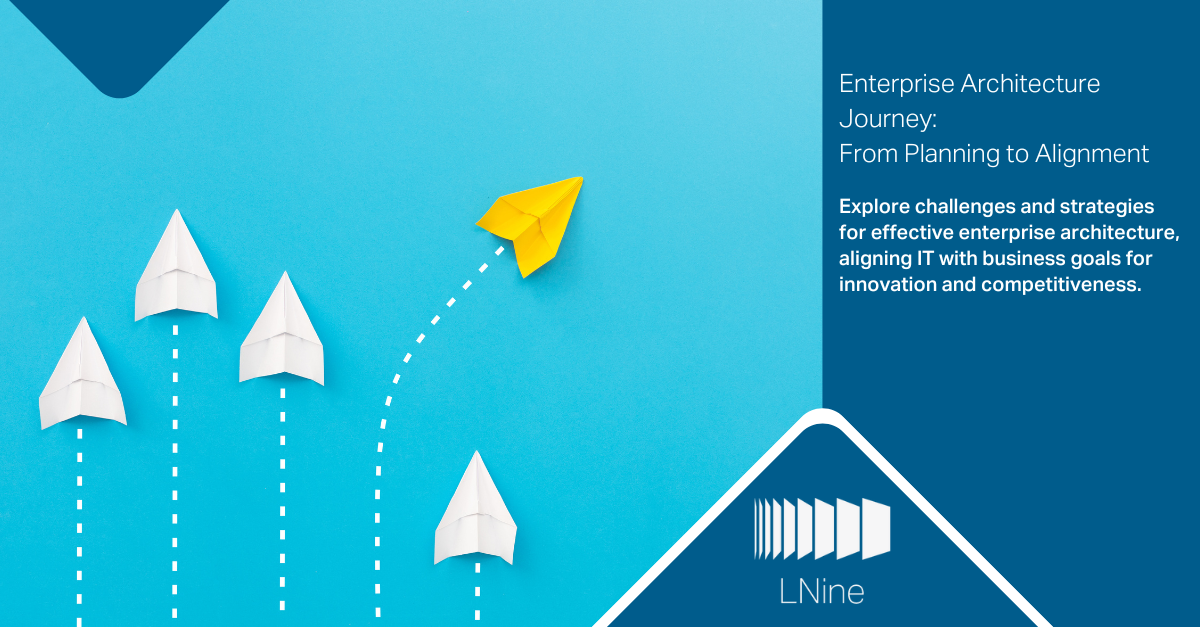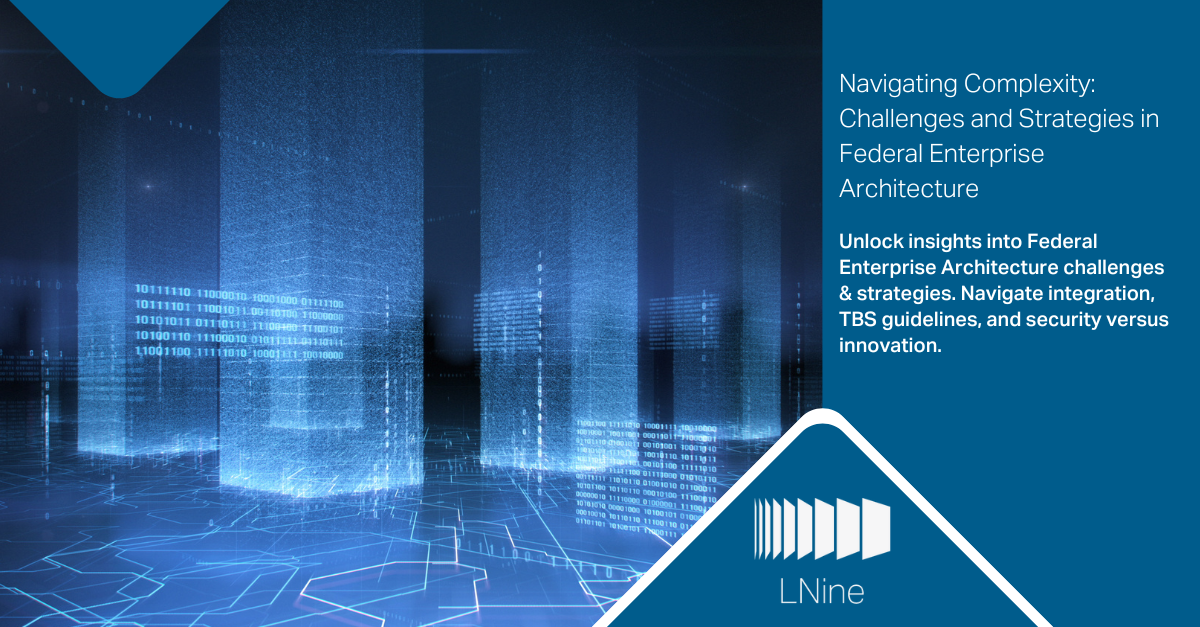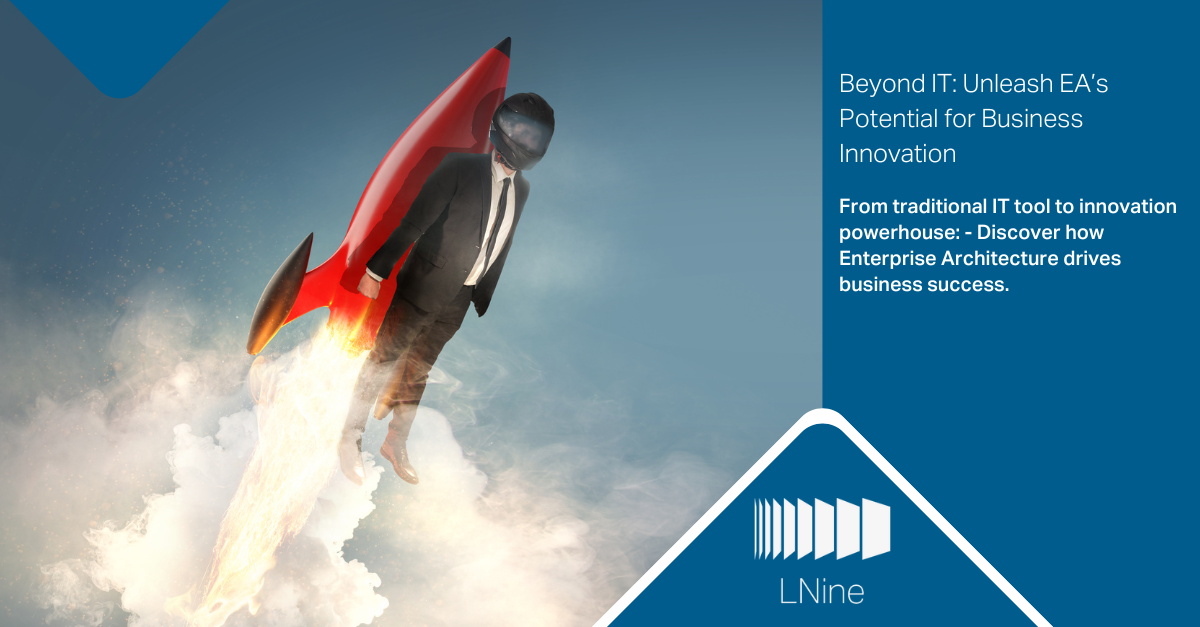Enterprise Architecture (EA) is a cornerstone in modernizing government operations, but implementing it within the intricate web of federal systems presents many challenges. In this article, we delve into the complexities the federal government faces in establishing a robust Enterprise Architecture, focusing on the challenges posed by the diverse nature of government systems, adherence to Treasury Board Secretariat (TBS) guidelines, and the delicate balance between security and innovation.
Latest Posts
- Cloud Transformation
- Modernization
- Authority to Operate
- cloud migration
- optimization
- Canadian Federal Government Contracting
- HIPAA
- Operational Excellence
- Security Assessment and Authorization
- Canadian Federal IT
- Cloud FinOps
- Cloud Management
- Cybersecurity
- Enterprise Architecture
- Information Management
- Canadian Federal Government employment
- Canadian Federal Government jobs
- Technical Debt
- Procurement Processes
- Technical debt in federal government
- Technical discussion
- AWS
- Canadian Federal Government resume
- Federal Government Staffing
- Microsoft
-
Enterprise Architecture (EA) can support and enable innovation within organizations by providing a structured approach to aligning business goals and objectives with technology solutions.
In the digital age, data is the new gold. And just like gold, it needs to be protected. As organizations race to modernize their applications, strengthening security and ensuring compliance have become more than just IT concerns—they're business imperatives.
The good news? Modernized applications often come with improved security features, which are crucial in today's threat landscape. Consider this eye-opening statistic from IBM's Cost of a Data Breach Report 2021: organizations with fully deployed security automation experienced breach costs that were 80% lower than those without security automation. That's not just a number—it's a compelling argument for modernization.
Modernization: Your Security Upgrade
Modern application architectures, such as microservices and serverless computing, aren't just about improved performance and scalability. They're also your ticket to better security controls. Unlike traditional monolithic systems, these architectures allow for more granular security policies and faster responses to security incidents. It's like upgrading from a castle wall to a smart home security system—more flexible, more responsive, and more effective.
Take the case of a financial services firm that faced increasing cyber threats and compliance challenges with its legacy systems. By modernizing its applications and moving to the cloud, the firm implemented a suite of advanced security measures:
- Encryption for data protection
- Identity and access management for controlled access
- Automated threat detection for real-time security
The results? A 60% reduction in security incidents and improved compliance with regulatory requirements. That's not just an IT win—it's a business transformation.
Your Security and Compliance Playbook
So, how can you strengthen security and ensure compliance during your modernization journey? Here's your playbook:
- Embrace Security by Design: Don't treat security as an afterthought. Incorporate it into the very design and development of your applications. It's like building a house—it's much easier (and more effective) to include security features during construction than to add them later.
- Encrypt Everything: Implement robust encryption methods for data at rest and in transit. Think of encryption as your data's invisibility cloak, protecting sensitive information from prying eyes.
- Control Access with IAM: Use Identity and Access Management (IAM) solutions to control and monitor access to applications and data. It's like having a strict bouncer at the door of your data nightclub—only those on the list get in.
- Automate Your Security: Deploy automated security tools for continuous monitoring and threat detection. These tools are your tireless security guards, watching for threats 24/7 and responding in real-time.
- Simplify Compliance: Use cloud services that offer built-in compliance features and certifications. It's like having a compliance expert on your team, helping you navigate the complex world of regulatory requirements.
The Payoff: Benefits of Enhanced Security and Compliance
Investing in security and compliance isn't just about avoiding bad outcomes—it's about creating good ones:
- Fortress-like Protection: Improved security measures significantly lower the risk of data breaches and cyber-attacks. In a world where a single breach can cost millions, this protection is priceless.
- Regulatory Peace of Mind: Ensuring compliance with industry regulations protects your organization from legal and financial penalties. It's like having insurance for your data practices.
- Trust Dividend: Enhanced security and compliance build trust with customers and stakeholders. In an era where data breaches make headlines, being known for strong security can be a significant competitive advantage.
Navigating the Challenges
Of course, enhancing security and compliance during modernization isn't without its challenges. High costs, complexity, and potential disruptions are common obstacles. To smooth the path:
- Bring in the Experts: Engage with security experts and consultants. Their experience can help you navigate the complex security landscape and ensure you're following best practices.
- Take It Step by Step: Implement security measures incrementally. This phased approach helps minimize disruptions and manage costs effectively.
- Leverage Cloud Security: Utilize the security features offered by cloud providers. These are often more advanced than what's available in on-premises environments, giving you state-of-the-art protection without the need to build it yourself.
The Security-First Future
Strengthening security and ensuring compliance are not just critical components of application modernization—they're the foundation of digital trust in the 21st century. By adopting modern architectures, implementing robust security measures, and leveraging cloud-based compliance features, organizations can protect their data, meet regulatory requirements, and build lasting trust with their customers.
While challenges exist, the benefits of enhanced security and compliance far outweigh the costs. In a world where data breaches can shake businesses to their core, a strong security and compliance posture isn't just a nice-to-have—it's a must-have.
Remember, in the digital age, your security is only as good as your weakest link. Modernization is your opportunity to strengthen every link in the chain. The question isn't whether you can afford to prioritize security and compliance—it's whether you can afford not to.
The Modernization Imperative
In today's fast-paced market, the ability to quickly deliver new features and products isn't just a nice-to-have—it's a crucial competitive advantage. Application modernization plays a pivotal role in this race against time, enabling businesses to respond swiftly to market demands and customer needs.
Consider this eye-opening statistic from DevOps Research and Assessment (DORA): elite performers who have embraced modern DevOps practices can deploy code 208 times more frequently than low performers. That's not just an improvement—it's a revolution in delivery speed.
The Stakes: Why It Matters
Speed to market is the new currency in the digital economy. It's about capturing market opportunities before your competitors do, and staying ahead of the curve. Modernized applications, built on agile and flexible architectures, are the engines that power this rapid development and deployment.
Success in Action: A Case Study
Imagine a technology startup aiming to disrupt the market with innovative software solutions. By embracing a cloud-native architecture and implementing DevOps practices, this ambitious team transformed their development cycle from a marathon to a sprint—reducing it from months to mere weeks.
The result? A 50% increase in market share within a year. That's the power of rapid deployment in action, allowing the company to quickly release new features and adapt to customer feedback in real-time.
Strategies for Success
So, how can you accelerate your time-to-market? Here are four key strategies:
- Embrace Continuous Integration and Continuous Deployment (CI/CD): Implement CI/CD pipelines to automate the build, test, and deployment processes. This ensures that code changes are integrated and deployed quickly, dramatically reducing the time from development to production.
- Adopt Agile Development: Embrace agile methodologies to enable iterative development and fast feedback loops. This approach allows teams to pivot quickly, adapting to changing requirements and delivering value incrementally.
- Leverage Microservices Architecture: Break down applications into smaller, independently deployable components. This enables faster development and deployment cycles, as changes can be made to individual services without affecting the entire application.
- Containerize Your Applications: Use containers to create consistent development and production environments. Containers simplify deployment and ensure that applications run reliably across different environments, further speeding up your delivery pipeline.
The Payoff: Benefits of Accelerated Time-to-Market
Investing in faster time-to-market isn't just about speed—it's about creating tangible business value:
- Competitive Edge: Faster time-to-market allows you to capture new opportunities and stay steps ahead of your competitors.
- Customer Delight: Rapid deployment of new features and updates keeps your customers satisfied and loyal, reducing churn and increasing lifetime value.
- Business Agility: The ability to quickly respond to market changes and customer feedback enhances your overall business agility and resilience.
Navigating the Challenges
Of course, accelerating time-to-market isn't without its hurdles. Increased complexity and potential quality issues are common concerns. To smooth the path:
- Prioritize Quality: Implement robust testing frameworks and practices. Remember, speed without quality is a recipe for disaster.
- Invest in Your Team: Provide training and resources for DevOps practices. Your team is your most valuable asset in this journey.
- Automate Everything: Automate as many aspects of the development and deployment process as possible. This reduces manual intervention and errors, ensuring consistency and reliability.
The Road Ahead
Accelerating time-to-market through application modernization isn't just a technical upgrade—it's a business transformation. By adopting CI/CD pipelines, agile methodologies, and modern architectures like microservices and containers, you can significantly reduce the time it takes to deliver new features and products.
While challenges exist, the benefits of faster time-to-market far outweigh the initial hurdles. In a landscape where speed often determines success, the ability to rapidly deliver value isn't just an advantage—it's a necessity.
Remember, in the digital age, it's not just the big that eat the small. It's the fast that eat the slow. Is your business ready to pick up the pace?
In today's digital landscape, performance and scalability aren't just technical buzzwords—they're critical factors that can make or break a business. As customer expectations soar and digital traffic surges, the ability to deliver consistently high performance under varying loads has become a key differentiator.
Modernized applications, built on cloud-native architectures, are rising to this challenge, offering significant advantages over legacy systems. A Microsoft Azure case study drives this point home: after modernizing their applications, one organization saw a 50% reduction in application response times and supported 40% more concurrent users. These aren't just numbers—they represent real improvements in user experience and business capacity.
The Scalability Imperative
Scalability is the secret sauce that allows systems to handle increased loads without breaking a sweat. For businesses, it's the difference between capitalizing on sudden spikes in demand and watching opportunities slip away due to system failures.
Traditional on-premises systems often struggle with scalability, requiring significant time and resources to scale up or down. It's like trying to add lanes to a highway during rush hour—possible, but painfully slow and disruptive.
Consider the case of a global streaming service that faced this very challenge. During peak times, performance issues led to buffering videos and frustrated customers. By modernizing its applications and embracing a cloud-native architecture, the service gained the ability to automatically scale resources based on demand. The result? A stunning 70% improvement in performance during high-traffic periods, ensuring viewers could binge their favorite shows without interruption.
Strategies for Scaling New Heights
So, how can you enhance your application's performance and scalability? Here are some key strategies:
- Embrace Auto-Scaling: Implement auto-scaling to dynamically adjust resources based on real-time demand. It's like having a smart traffic system that opens new lanes exactly when and where they're needed. Cloud providers offer auto-scaling features that ensure applications remain responsive and cost-effective, even during unexpected traffic spikes.
- Balance the Load: Use load balancers to distribute traffic evenly across multiple servers. This prevents any single server from becoming a bottleneck, much like how a skilled host distributes diners across different tables in a busy restaurant. The result? Improved application performance and reliability, even under heavy loads.
- Cache for Speed: Implement caching mechanisms to store frequently accessed data closer to the user. Think of it as placing frequently bought items near the checkout in a store—it reduces the time and effort needed to access popular data, improving response times and reducing server load.
- Go Micro with Containers: Adopt microservices and containerization to enhance flexibility and scalability. Containers allow applications to be deployed consistently across different environments, making scaling more efficient. It's like having a fleet of specialized food trucks instead of a single large restaurant—each unit can be quickly deployed where it's needed most.
The Payoff: Benefits of Enhanced Performance and Scalability
Investing in performance and scalability isn't just about technical metrics—it translates into tangible business benefits:
- Delighted Users: Faster, more reliable applications lead to higher user satisfaction and retention. In a world where users expect instant gratification, even a second of delay can lead to lost business.
- Operational Efficiency: Scalability ensures that resources are used efficiently, reducing costs and improving overall operational efficiency. It's about having the right resources in the right place at the right time.
- Room to Grow: Scalable applications can support business growth without the need for significant infrastructure investments. As your business expands, your applications can seamlessly grow with you.
Navigating the Challenges
Of course, enhancing performance and scalability isn't without its hurdles. High initial costs and integration issues can seem daunting. To smooth the path:
- Leverage the Cloud: Take advantage of cloud services that offer built-in scalability features. This can significantly reduce the need for extensive in-house development and provide a faster route to scalability.
- Monitor and Optimize: Continuously monitor application performance and optimize configurations. It's an ongoing process, not a one-time task.
- Invest in Your Team: Provide training and support for IT staff to effectively manage and optimize scalable applications. Your team is your greatest asset in this journey.
The Road Ahead
Boosting performance and scalability through application modernization isn't just a technical upgrade—it's a business imperative in today's digital-first world. By leveraging cloud-native architectures, implementing smart scaling strategies, and adopting modern development approaches, organizations can achieve significant improvements in application performance and scalability.
While challenges exist, the long-term benefits of enhanced performance and scalability far outweigh the initial hurdles. In a landscape where user expectations are constantly rising, the ability to deliver consistently excellent performance under any conditions isn't just an advantage—it's a necessity.
The question isn't whether your applications need to be scalable, but how quickly you can make it happen. In the race for digital excellence, the scalable shall inherit the earth.
In today's fast-paced business environment, adaptability isn't just an advantage—it's a necessity. The ability to pivot quickly in response to changing market conditions, customer needs, and global events can make or break a company. This is where application modernization comes into play, serving as a key strategy for achieving the agility required to stay competitive.
The urgency of modernization efforts has been underscored by recent global events. A Salesforce survey found that 88% of customers expect companies to accelerate digital initiatives in response to COVID-19. This statistic highlights a critical truth: businesses that can't adapt quickly risk being left behind.
The Agility Imperative
Traditional monolithic applications often struggle to keep pace with dynamic market conditions. They're like large ships—powerful, but slow to change course. Modern, cloud-native applications, on the other hand, are more like a fleet of smaller, nimble boats. They can be quickly updated, scaled, and redeployed to meet new demands.
Consider the case of a retail giant that faced declining sales due to outdated IT systems that couldn't support the surge in online shopping demands. By modernizing its applications and moving to the cloud, the company was able to:
- Improve its e-commerce capabilities
- Increase online sales by 25%
- Quickly scale resources during peak shopping times
- Integrate new features like personalized recommendations
This agility was crucial in adapting to rapidly evolving customer expectations and market conditions.
Strategies for Enhancing Agility
To achieve this level of adaptability, consider the following strategies:
- Embrace Microservices Architecture: Break down monolithic applications into microservices that can be developed, deployed, and scaled independently. This approach enhances flexibility and reduces the risk of system-wide failures. It's like having a set of building blocks that can be quickly rearranged to create new structures.
- Adopt API-Driven Development: Implement API-driven development to facilitate seamless integration with third-party services and applications. This strategy enables businesses to quickly add new functionalities and improve customer experiences. Think of APIs as universal adapters that allow different components to work together smoothly.
- Implement DevOps Practices: Adopt DevOps practices to streamline development and deployment processes. Continuous integration and continuous deployment (CI/CD) pipelines allow for faster updates and more reliable releases. This approach bridges the gap between development and operations, enabling faster, more reliable software delivery.
- Leverage Cloud Flexibility: Take advantage of the cloud's scalability to adjust resources based on demand. Cloud providers offer tools and services that automate scaling, ensuring applications perform optimally during peak times. This elasticity allows businesses to be responsive without overprovisioning resources.
Meeting and Exceeding Customer Expectations
In the digital age, customer expectations are constantly evolving. Modernized applications enable businesses to not just meet these expectations, but exceed them by providing faster, more reliable, and personalized services.
Gartner predicts that by 2025, 80% of customer service organizations will abandon native mobile apps in favor of messaging for better customer experiences. This shift underscores the need for agile, adaptable systems that can quickly pivot to new channels and technologies.
The benefits of modernization for customer experience are clear:
- Improved Performance: Cloud-native applications typically offer better performance and reliability, leading to higher customer satisfaction. In a world where every second counts, this can be a significant competitive advantage.
- Personalization: Modern applications can leverage data analytics and AI to deliver personalized experiences, increasing engagement and loyalty. This level of personalization was once the domain of tech giants, but is now achievable for businesses of all sizes through modernization.
- Rapid Response: The agility provided by modernized applications allows businesses to respond quickly to customer feedback and market changes. This responsiveness can turn customers into advocates and help businesses stay ahead of trends.
Navigating the Challenges
While the benefits of modernization are clear, the journey isn't without its challenges. High upfront costs, integration issues, and stakeholder resistance are common obstacles. To overcome these:
- Develop a Compelling Business Case: Clearly outline the ROI and long-term benefits of modernization to secure stakeholder buy-in. Use concrete examples and case studies to illustrate the potential impact.
- Plan for Integration: Address integration challenges by adopting standardized APIs and leveraging middleware solutions. Remember, the goal is to create a cohesive ecosystem, not a collection of isolated applications.
- Engage Stakeholders: Communicate the benefits and involve stakeholders throughout the modernization process to build support and minimize resistance. Modernization is as much about people and processes as it is about technology.
The Path Forward
Application modernization is no longer optional for businesses looking to adapt to evolving needs and customer expectations. By adopting modern architectures, implementing API-driven development, and leveraging cloud flexibility, organizations can achieve the agility needed to thrive in an ever-changing business landscape.
While challenges exist, the benefits of modernization in enhancing business agility and improving customer experiences far outweigh the costs. In a world where change is the only constant, modernization provides the tools and flexibility needed to turn challenges into opportunities.
The question isn't whether your business will need to adapt—it's whether you'll be ready when the time comes. Modernization ensures that your answer will be a resounding "yes."
RECOMMENDATION

RACI Matrix: Streamlining Stakeholder Management in SA&A

From Risk to Resilience: Exploring ATO and SA&A in Modern Cybersecurity

Enterprise Architecture Journey: From Planning to Alignment



